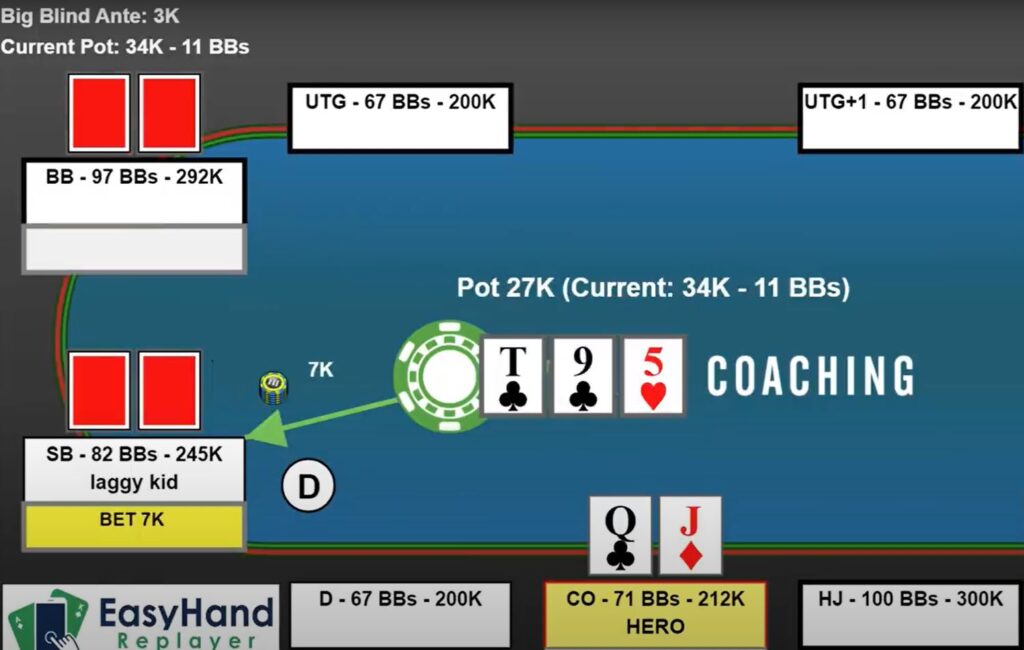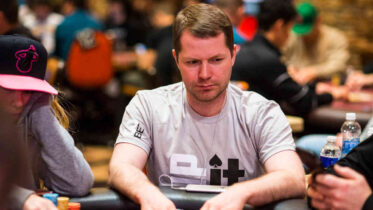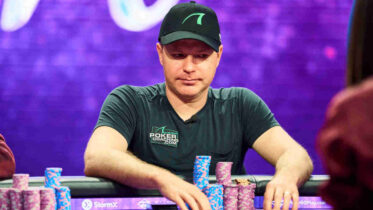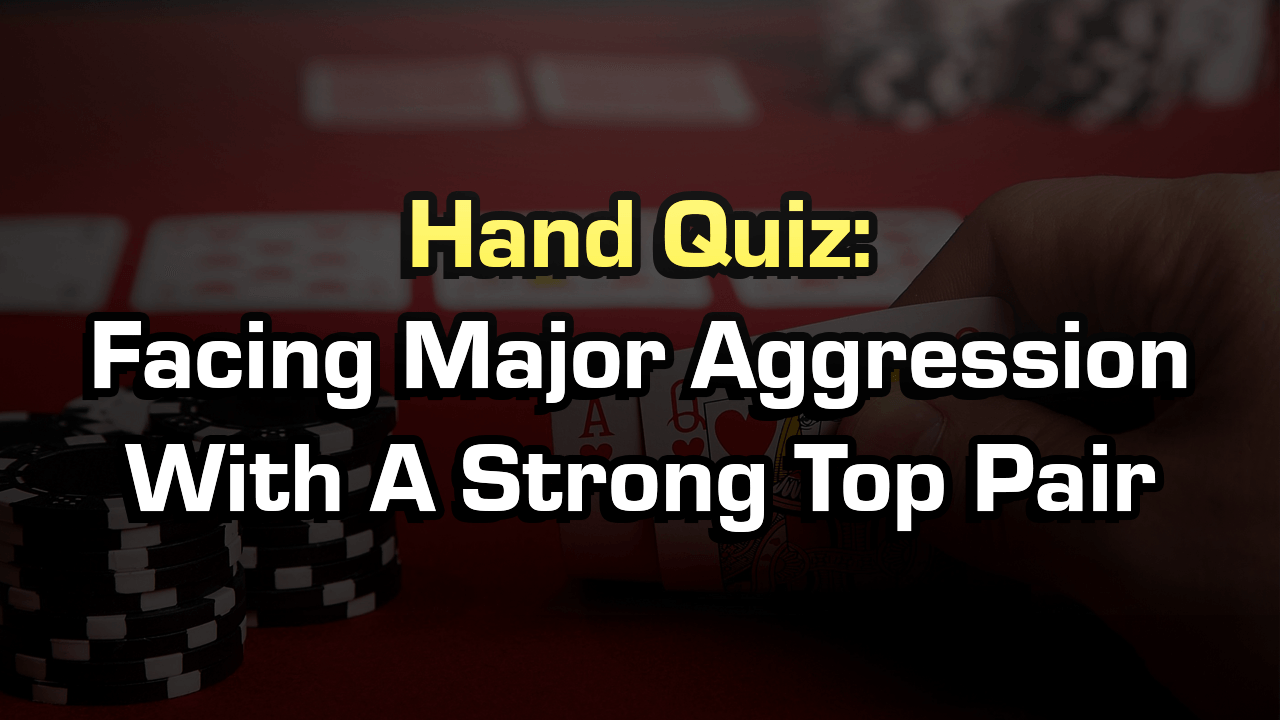One of the most perplexing situations you will find yourself in occurs when your opponent bets into you after you were the aggressor on the previous betting round. This play is referred to as a donk bet because, for the most part, bad players use donk bets seemingly randomly, but if used with a well-balanced poker range or a range designed to exploit the defender’s tendencies, they can be a powerful tactic.
Donk Betting Example
Suppose at 50/100, everyone folds to you in the cutoff seat, and you raise to 300 out of your 10,000 stack with Ah-5h. Only the big blind calls. The flop comes As-7d-6d. You should often continue betting this flop if your opponent checks due to having a range advantage and wanting to make your opponent fold various poker hands that have some equity.
This time though, your opponent leads for 500 into the 650 pot. This is a dicey situation because you have no real idea what your opponent is leading with. There are four types of hands that may be donk bet in this situation:
- Premium made hands: You currently lose to all of these, including 6-6, A-7, and 7-6.
- Marginal made hands: You currently beat some of these and lose to others, including A-9, A-2, and 8-7.
- Draws: You currently beat these but they have some amount of equity, including Qd-8d, 9-8, and 8-4.
- Junk: You currently crush all of these, including Q-9, J-8, and 4-3.
In the past, many weak players would only lead with their marginal made hands, hoping to find out where they stood in relation to their opponent’s hand. Their opponents would straightforwardly raise with their best hands (allowing the marginal made hands to confidently fold) and call with everything else (which the marginal made hands fare well enough against).
Other players only lead with their best hands, wanting to price out your draws. Some players only lead with their draws, hoping to make you fold many better hands. Other players only lead hands that have almost no equity, hoping to steal the pot when they are against worse than top pair.

Against each type of donk bettor, figure out what they are trying to accomplish and ruin their plan.
- If they lead with only premium hands, call with hands that have the correct equity to continue (mostly your draws) and fold everything else.
- Against players who bet marginal made hands, figure out if they will fold to aggression. If they will, raise with all your bluffs and call all your better made hands. If they will not fold to aggression, raise with your best hands and call with your marginal made hands and draws.
- If they lead with draws, raise with most of your range. If they lead with junk, raise with all your hands worse than the top pair and call with the top pair and better. Poker is easy when your opponents play in an unbalanced, predictable manner.
Today though, some donk bettors are a bit more sophisticated and use somewhat sound poker strategy. In general, when you bet into someone who should have the range advantage (as the preflop raiser usually will on A-x-x boards), you should bet with a polarized range consisting of your best made hands and junky draws, so in this case, two pair and better as well as weak flush draws and gutshot straight draws. Notice that even A-K loses to the best made hands, so it cannot confidently raise the flop.
Against someone who is leading with a strong polarized range, you should do a lot of calling with your hands that have decent equity against your opponent’s leading range, which will usually be bottom pair and better, looking to defend at roughly the minimum defense frequency, especially on the turn and river.
The minimum defense frequency can be found using this equation: MDF = 1 -bet size/(bet size + pot). If your opponent bets 75% pot on all three streets, the minimum defense frequency on each street is 1 –(.75/(1+.75) = 57%. So, you need to call (or raise) with at least 57% of your range, especially on the turn and river. This will often result in you overfolding a bit on the flop if you only call with the bottom pair and better plus all draws, and then you can fold out some weak draws and weak pairs on the turn and then call with some middle pairs and better on the river.
When your opponent polarizes their range, it makes your situation difficult, but it isn’t as bad as it seems. When your opponent donk bets many of their best made hands, it makes their flop checking range far weaker, allowing you to profitably continuation bet with almost your entire range based on pot odds. Your opponent will have a difficult time defending because they no longer have many of their best hands in their range.
In general, I do not do much donk betting, but if you encounter someone who responds to them particularly poorly, they can be a powerful tactic that allows you to win many small pots that you would have otherwise lost or maximize value from premium hands that would have won less by checking. Thanks for reading, and good luck in your games!




